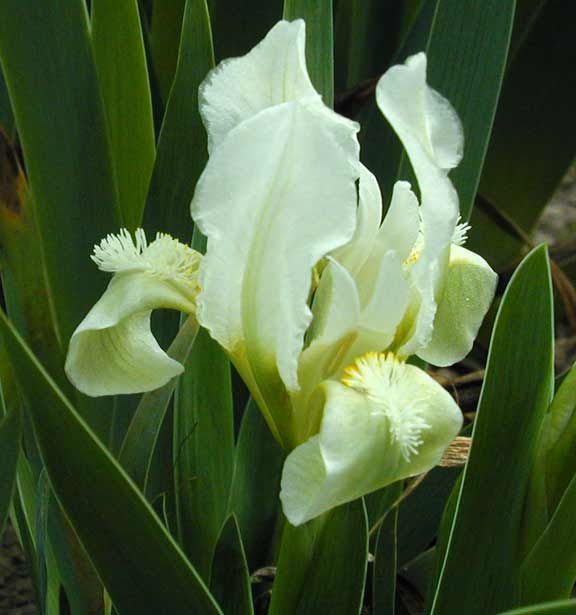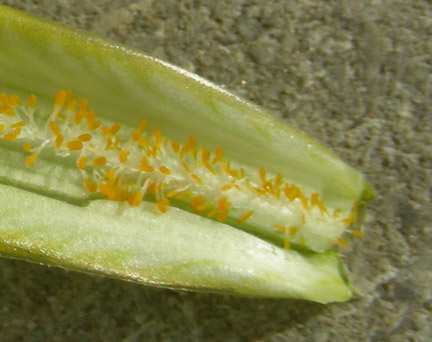Here is a pumilla that I suspect to be a glaciata. I have been looking
for a glaciata pumilla for awhile and may have one here. Pumillas have
the glaciata gene but not the classic plicata or the luminata genes.
Thus we don't get pure pumillas 8/8/8/8 with plicata patterns, but we
get MDB (8/8/8/12) and SDB (8/8/12/12) plicatas courtesy of the
glaciata gene in pumillas.
Almost all pumillas have the pumilla spot, but there are a few rare
ones without it. I have always suspected these as being glaciatas but
havn't, until now, been able to check it out.
This seedling has no sign of anthocyanin, even on close inspection of
the haft. The green is chlorophyl from plastids that havn't changed
from chloroplasts to chromoplasts. The usual way it does in flowers.
The green veining is very pure green, no hint of anthocyanin. We can
get this green in a number of flowers. It is more proniunced on bottom
of the falls. When we have chlorophyl veins, they show green. This
involves the sructure of the plastids and how they store the pigments.
In chromoplasts, the cartenoid pigments are in small globules inside
the plastids. In chloroplasts, the cells are very densly packed with
chrlorophyl in thylakoid structures. The density of chlolophyl is
very high, and blocks out the chromoplasts. To check this out, compre
how backlight leaves look compared to backlit cartenoid flowers.
The test crosses with plicatas has already started.
Chuck Chapman



